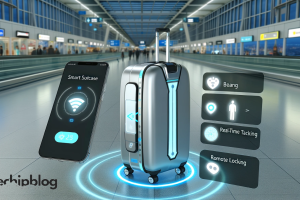Starlink, Elon Musk’s satellite internet constellation, has emerged as a major player in the race to provide global internet access, particularly in underserved and remote areas. Its rise raises significant questions about the potential of satellite internet to bridge the digital divide and connect the unconnected. Let’s explore both the promises and challenges:
Promises:
Unlike traditional terrestrial infrastructure, satellite internet can potentially reach even the most remote corners of the planet, bypassing limitations of cables and towers. This is especially valuable for rural areas, islands, and developing countries struggling with limited internet access.
While still not on par with fiber optic connections, Starlink offers significantly faster speeds compared to traditional satellite internet, making it viable for basic online activities like browsing, email, and video conferencing.
Starlink boasts lower latency due to its network of satellites orbiting closer to Earth, potentially improving real-time applications like video calls and online gaming.
Starlink’s entry into the market could stimulate competition amongst existing satellite internet providers, potentially leading to lower costs and wider access in the long run.
Challenges:
Satellite technology still faces hurdles, including issues with weather interference, potential for light pollution from the constellations, and concerns about space debris.
Starlink’s current equipment costs and subscription fees put it out of reach for many in developing countries and rural areas.
Ensuring equitable access and fair regulations across different countries and regions remains a complex challenge.
Some critics raise concerns about potential net neutrality violations due to the centralized nature of satellite internet systems.
Current Impact and Future Potential:
While still in its early stages, Starlink has already made significant strides in providing internet access to previously unconnected areas. It has connected schools, hospitals, and communities in remote locations, facilitating communication, education, and economic opportunities.
Moreover, it showcases the potential of satellite internet to play a crucial role in bridging the digital divide.
However, addressing the challenges mentioned above is crucial for maximizing this potential. Collaboration between governments, internet providers, and technology companies is necessary to ensure affordable, equitable, and sustainable access for all.
Further Discussion:
Would you like to delve deeper into specific aspects of Starlink or satellite internet’s role in bridging the digital divide? Perhaps you’re interested in a particular region or application, or maybe you have questions about the technological or regulatory challenges.
I’m happy to explore these topics further and provide additional information based on your specific interests.
Remember, bridging the digital divide is a complex challenge requiring multifaceted solutions. While Starlink and satellite internet offer promising avenues, they are just one piece of the puzzle. We need to continue exploring and implementing innovative solutions to ensure that everyone, regardless of location or socioeconomic background, has access to the transformative power of the internet.













Add Comment